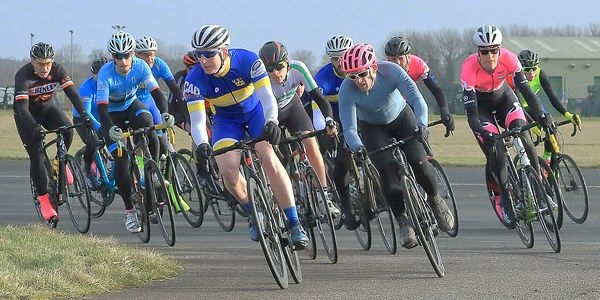
Learning to Race – by Peter Fifield
11th February 2019
We have a family habit of listing in December things we want to do in the year ahead. Write this article, read that book, visit this place, try that food. The whiteboard stays there for the whole year, and we cross things off as we do them. As this implies, I am a planner. I like targets, and I like being able to work methodically towards them. If there’s one thing better than achieving a target, it’s following a meticulous plan in order to do so.
But the thing planning can’t do is take the plunge and just enter something. There’s always a reason to be a little better prepared to try racing: I could wait for my power to reach a certain number. I could lose a bit more weight. I could stretch out that little niggle. I could wait for nicer weather. I could find a friend to do it with. I could sign up after the screamers have started again. All of these things are excuses that arrive dressed like sensible reasoning.
So, on Wednesday night, at the last possible moment, I entered the first Winter Crit at Abingdon, slightly taking myself by surprise.
Saturday comes around and I have slept badly. The ground is just wet enough to be slippery. It’s about 4 degrees. And there is a 20mph wind and 40mph gusts. My stomach is churning. I sign on. Number 13, of course.
Now I’m at the start line. There are two other Condors, Dave Dyer and Brendan Schofield, among forty or so riders, so I’m not lonely. Pete Smith and Kristen Lovelock are at the side of the course: my first race is not the isolated experience I was nervous about.
As the race starts I make sure I’m near, but not at the front. It’s a pleasant surprise that we don’t set off at a lick. It’s a pretty steady pace, almost an anti-climax after my nerves. I was sure I was going to be dangling near the back of the pack, and it’s slower than a dev ride.
I do not touch the front for 45 minutes. I am never further back than seventh or eighth, and work as little as possible for as long as possible. I can sit in my kitchen and work on threshold power. My objective here is to learn to ride in the bunch and work on positioning, and that’s what I’m going to do.
This means I see the two man break go early in the race and do not think for a moment of following it. There are fifty minutes ahead, and forty riders: these two must be mad. It turns out that they’re not. They are strong and aggressive and they eventually cross the line first and second.
Not knowing this at the time, however, I settle in to the pattern of the race, which is that every time we come on to the back straight, we push a bit harder and see what happens. It turns out that what happens is that half of our pack disappears very quickly, cutting us down to thirteen riders who aren’t working cohesively to bring back the two escapees. Sadly, then, this tactic hurts us more than it does the breakaway pair, and that’s how they stay away.
Nevertheless, I concentrate on filling gaps and being assertive, and despite the wind there are no scary moments or near misses. It feels safe. Another worry crossed off.

I notice as the laps pass that my competitors take the corner onto the back straight as tight as they can and end up in the middle of the race course. This is the shortest route, so probably feels like good sense. But it also leaves a huge space for riders to sit in one’s shelter, forming an echelon across the runway. I think it’s a mistake. By contrast, I take the corner wide and look for the cones, making sure I’m wedged on the far left so nobody can sit in my draft without leaving the course. I know it’s working when I see the smallest rider of the group struggling to squeeze in there, hitting cones and weaving off the course. Riding behind me is usually like sitting behind a bus coming down the High Street. I suspect some Condors would like to have an armchair installed behind me, it’s usually so comfortable.
On the last lap the back straight is the same as ever, with stronger riders pushing hard but from the middle of the course. Half way down I sprint from about sixth, staying on the hard left of the course where I know they can’t get shelter. I don’t look back until the final bend, when I see that there’s nobody with me. I don’t know where they are, but I’m not going to risk having a proper look. I come in a few seconds ahead for some points. Cat 3 is only five points away.
First race done, I’m struck by the difference from my usual efforts: this wasn’t sustained or regulated. It was calm, measured, with a few surges and a short maximal effort at the end. It was nice to do my first race and not feel like I was hanging on for grim death. I realise that I was lucky to be a big rider on a flat, windy course, and that I probably helped make the same experience hard for other people. But I wasn’t especially prepared, haven’t ridden in a group since about October, and still did OK.
It’s an ill wind that blows nobody any good.
